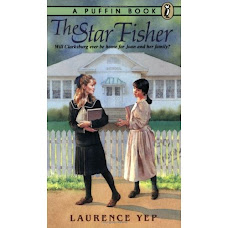1. BIBLIOGRAPHY
Pinkney, Andrea Davis. 1998. DUKE ELLINGTON: THE PIANO PRINCE AND HIS ORCHESTRA Ill. Brian Pinkney. Hyperion Books For Children, New York. ISBN: 0-7868-2150-7
2. PLOT SUMMARY
As a boy, Duke didn’t want to practice the piano. He thought it had an “umpy-dump” sound. Years later as a young man Duke heard a ragtime piano player and fell in love with the new sound. It had a “soul rousing romp” that had Duke hooked. He practiced the piano with all his heart until he was playing in clubs and honky-tonks in Washington DC and New York City. Duke Ellington and his Orchestra had hit the big time when they played at The Cotton Club in Harlem. "It was considered the swankiest hangout, a big time nightspot”. The orchestra was made up of several talented musicians that he called his cats. In 1943 they played at Carnegie Hall in New York
CRITICAL ANALYSIS
The story of Duke Ellington makes you feel like you are in the 1930’s with the sound of swing that Ellington was famous for on every page. Duke's composition of Black Brown and Beige, “elaborates the history of African American people. A suite that rocked the bosom and lifted the soul. It sang the glories of dark skin, the pride of African heritage, and the triumphs of black people, from the days of slavery to years of the civil right struggle." It is very engaging with its colorful illustrations that are full of movement. The illustrations are on scratchboard with gouache and oil. It has a biography page on Edward Kennedy 'Duke' Ellington with a source list.
Caldecott Honor Book
Ages 4-8
REVIEWS
Amazon.com
Edward Kennedy Ellington, "King of the Keys," was born on April 29, 1899, in Washington, D.C. "He was a smooth-talkin', slick-steppin', piano-playin' kid," writes master wordsmith Andrea Pinkney in the rhythmic, fluid, swinging prose of this excellent biography for early readers. It was ragtime music that first "set Duke's fingers to wiggling." He got back to work and taught himself to "press on the pearlies." Soon 19-year-old Duke was playing compositions "smoother than a hairdo sleeked with pomade" at parties, pool halls, country clubs, and cabarets. Skipping from D.C. to 1920s Harlem, "the place where jazz music ruled," Duke and his small band called the Washingtonians began performing in New York City clubs, including the Cotton Club, where Duke Ellington and his Orchestra was officially born. By 1943, Duke Ellington--writer of more than 1000 compositions, including ballet and film scores, orchestral suites, musicals, and choral works--had made it all the way to Carnegie Hall.
We applaud this talented husband-and-wife team--award-winning illustrator Brian Pinkney and writer Andrea Pinkney--for making music fly in this fantastic tribute to a jazz legend. Andrea does an extraordinary job of translating music into words, with blues "deeper than the deep blue sea" and "hot-buttered bob, with lots of sassy-cool tones," while her husband visually interprets the movement of music as spirals, waves, and swirls of color, prepared as scratchboard renderings with luma dyes, gouache, and oil paint. Andrea writes, "Toby let loose on his sleek brass sax, curling his notes like a kite tail in the wind. A musical loop-de-loop, with a serious twist," while Brian paints those curling notes, the loop-de-loops, and the kite sailing up to the New York City skyline. Young readers will enjoy the rhythm and beauty of the story itself, and may even be inspired to give Raffi a rest and swing with the Duke! (Great read-aloud, ages 4 to 8) --Karin Snelson, Amazon.com Kids editor
School Library Journal
Grade 1-5AA royal introduction to the piano prince. Told in a swingy conversational tone and highlighting the musician's childhood, early ragtime days, and stellar rise to popularity, playing at the Cotton Club and, later, Carnegie Hall, this is a jazzy treat. It is rare to find text that describes music so well. Phrases such as "sassy ride on his cymbal," "musical stream," and "purple dash of brass" carry the auditory experiences of the Duke's music right off the page. Young readers will find more than just a few facts here. They will learn what Duke Ellington did for the jazz world, how his music was played, and the legacy he left behind. Brian Pinkney's distinctive scratchboard, gouache and oil paintings are a harmonious complement to Andrea Pinkney's text. Bright, wild colors on soft neon backgrounds are beautifully balanced with black-and-white highlights. It is the blending of words, symbols, and pictures that bring this subject to life. A page of biographical information and impressive source notes conclude the presentation. This book swings. Don't miss it.ABeth Tegart, Oneida City Schools, NY
Copyright 1998 Reed Business Information, Inc.
CONNECTIONS
Share a recording of the music of Duke Ellington and his Orchestra
Share a book of the instruments played in a jazz band
Subscribe to:
Post Comments (Atom)







No comments:
Post a Comment